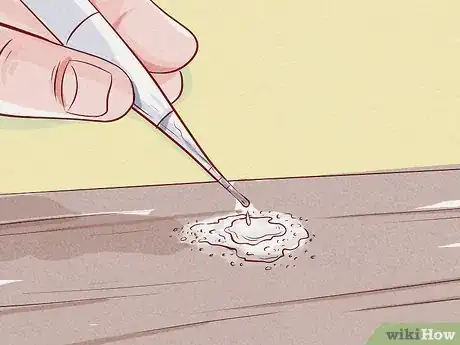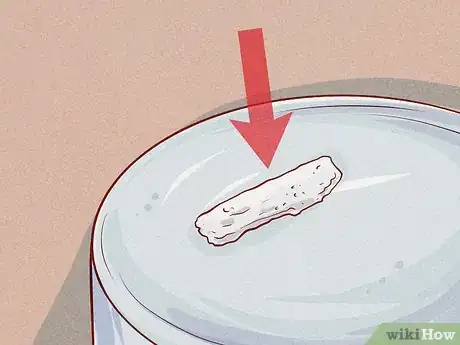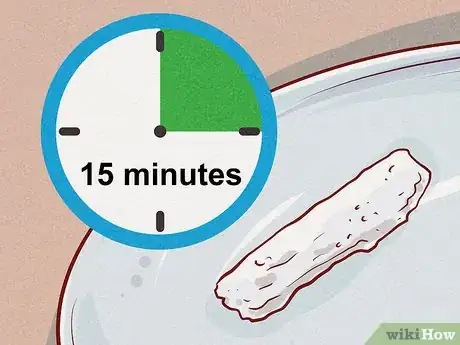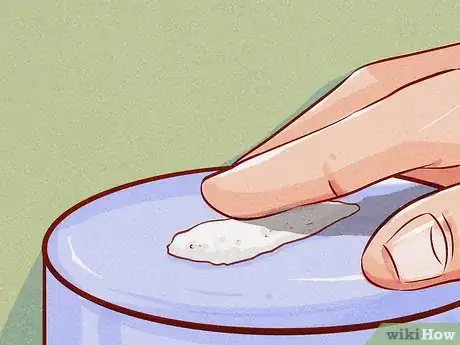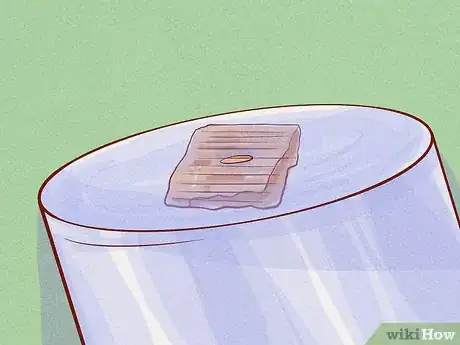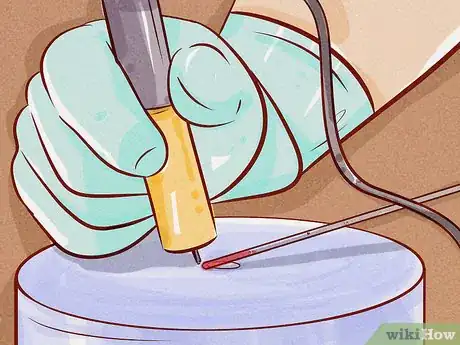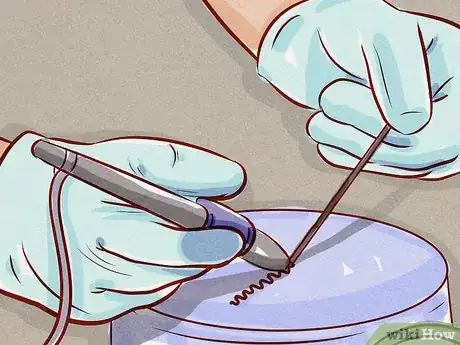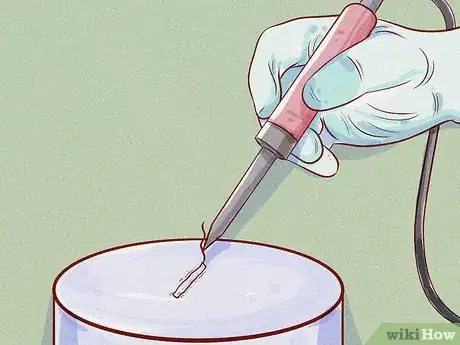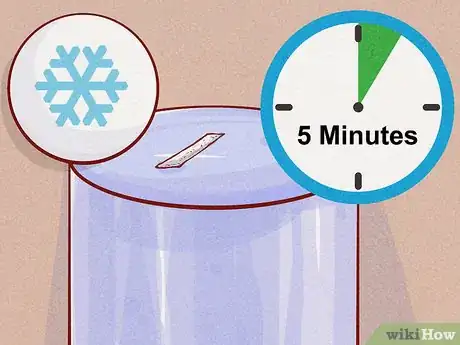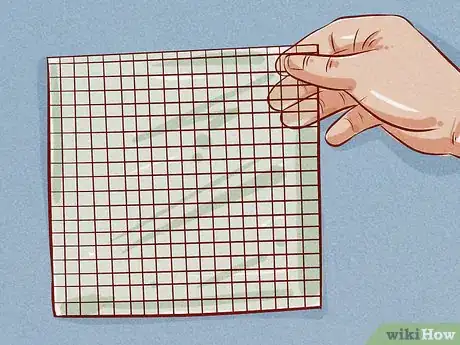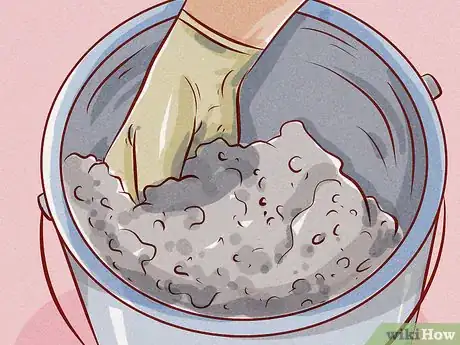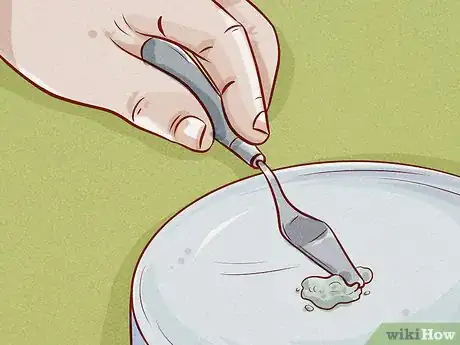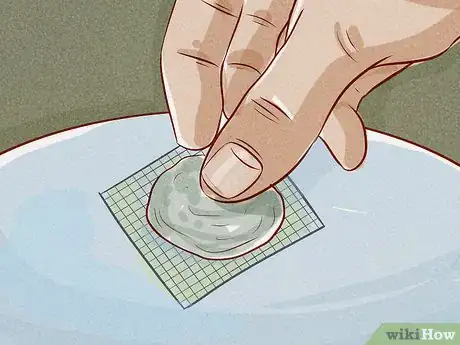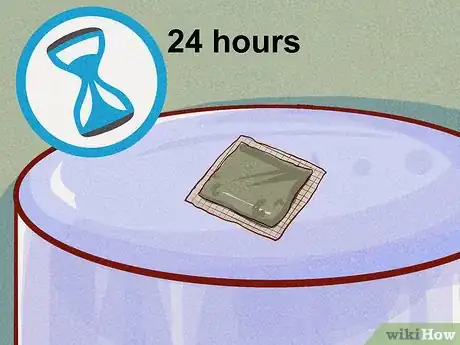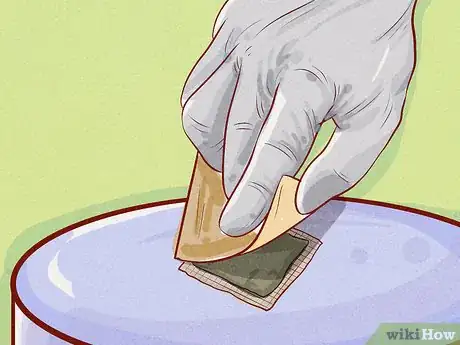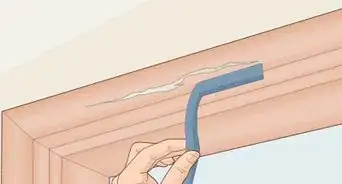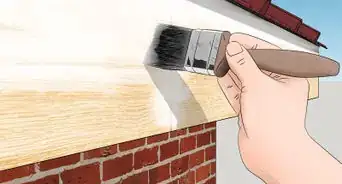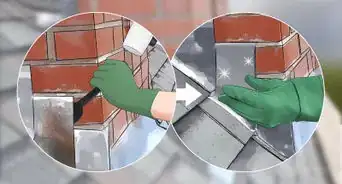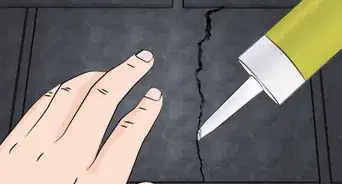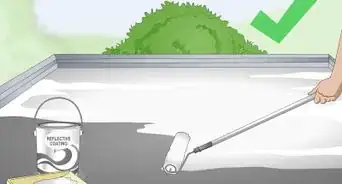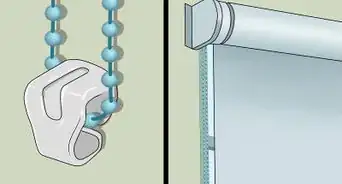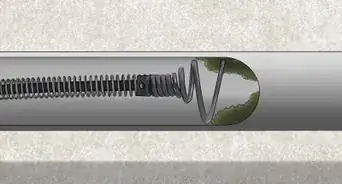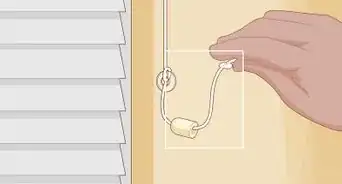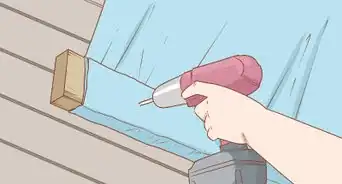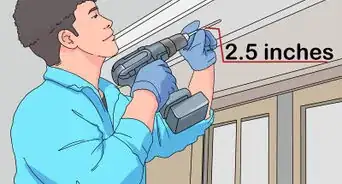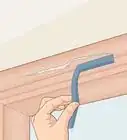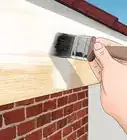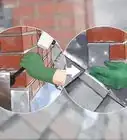This article was co-authored by Ryaan Tuttle and by wikiHow staff writer, Hunter Rising. Ryaan Tuttle is a Home Improvement Specialist and the CEO of Best Handyman, Inc. in Boston, Massachusetts. With over 17 years of experience, he specializes in building home service businesses, focusing on creating scalable and efficient brands. With the help of his global team, the companies have achieved over 10+ million in sales and received recognition through magazine features, and enjoy partnerships with wikiHow and Jobber field service software. Boston Magazine and LocalBest.com have named Best Handyman Boston the Best Handyman in Boston. Ryaan holds Construction Supervisor and Home Improvement Contractor Licenses.
There are 14 references cited in this article, which can be found at the bottom of the page.
This article has been viewed 136,406 times.
When plastic is punctured, it seems tricky to fix at first. Luckily, there are ways to fix and patch plastic without completely replacing it. A makeshift cement from super glue and baking soda can fill small holes in a pinch. Larger holes in plastic can be filled with melted plastic or epoxy. No matter which method you use, you’ll be able to plug the hole and pretend it never even existed.
Steps
Filling Tiny Holes with Super Glue and Baking Soda
-
1Attach cardboard on the backside of the hole. Use a sturdy piece of scrap cardboard that be easily removed later and attach it with tape or a hand clamp. Placing a back piece behind the hole prevents any material from running through the hole.[1]
- If you cannot fit cardboard between the plastic, like if the hole is in a gas can, this can still work, but it may not have as solid of a hold.
-
2Squeeze three or four drops of super glue into the hole. Make a small pool at the bottom of the hole with a few drops of super glue. The backing will give the glue a flush edge at the bottom of the hole. Super glue dries quickly, so you will have to work fast before it sets.[2]
- Wear plastic gloves to avoid getting super glue stuck on your hands.
Advertisement -
3Sprinkle a pinch of baking soda on top of the glue and press firmly. Press the baking soda into the super glue with your finger or a flat edge, so the two substances bond together. Super glue is thin, but when combined with a powder like baking soda, it thickens and makes more of a cement-like substance.[3]
- Other powders like sawdust or chalk powder may also work.
-
4Layer super glue and baking soda until the hole is filled. Keep building layers until you’ve formed a plug that is flush with the top of the hole. Even if the hole is filled after the first time, add a second layer of super glue and baking soda to strengthen the bond.[4]
-
5Let the patch dry for 15 minutes. As it dries, the hardened substance will be a chalky white color. While it is not the most visually pleasing, it will be stiff and keep the hole closed. Once the patch is dry, you can remove the backing.[5]
- You can try mixing colored powder or food dye with the baking soda to resemble the color of the plastic more closely.
-
6File the top of the patch, if there is any residue. Use short back-and-forth strokes to sand away any buildup. Keep a constant pressure as you file the cement mixture. Sandpaper or a fine-grit metal file will work fine.[6]
- Wear a face mask so you don’t breathe in any plastic particles as you work.
Melting Plastic Rods for Small Holes
-
1Attach a cardboard backing to the hole. Adhere the backing with pieces of tape or with a hand clamp to prevent any run-off. Make sure it is pressed tight against the bottom of the hole. Scrap cardboard works best since it can easily be removed when you’re finished.[7]
-
2Melt a plastic welding rod with a welder into smaller holes. Hold the plastic rod 1⁄2 inch (13 mm) above the hole. Use the welder on the end of the plastic rod to melt the plastic into the hole. Once the hole is filled, turn off the welder and let the plastic solidify.[8]
- Keep your hands away from the heating end of the plastic welder to avoid burns.
- Find a rod that closely resembles the color of the plastic you’re fixing.
-
3Wrap a heated plastic rod into a spiral inside a larger hole. Heat the end of the plastic rod with a plastic welder. Start spiralling the rod along the bottom of the hole so it is pressed against the backing. Layer the plastic until it lays flush with the top edge of the hole.[9]
- Hold the plastic welder 1⁄2 inch (13 mm) away from the rod. You want it to be malleable, but not for it to melt completely.
-
4Use a soldering iron to trim the rod and smooth the hole. Once the hole is filled with the plastic, use a hot soldering iron to cut the end. Rub the edge of the iron across the top of the filled hole to smooth it out and to fuse the top of the plug.[10]
- Do not leave a depression in the plug, since this could compromise its strength and integrity.
-
5Let the plastic cool for five minutes before filing it. It only takes a few minutes for the plastic to solidify. Once it is cool to the touch, use a file or sandpaper to smooth out plastic and make it flush.[11]
- If you want to get rid of any file markings, hold the plastic welder just above the area to smooth it out.
- Cut away any large pieces that are too big to file with a small razor blade.[12]
Using Epoxy to Patch Larger Holes
-
1Cut two fiberglass patches 6 inches (15 cm) larger than the hole. Leave a little extra room on the fiberglass gives you a little wiggle room and helps ensure the hole is fully covered. These mesh patches provide an area to place epoxy across the hole of the plastic.[13]
- Fiberglass patches can be purchased at hardware stores or online.
-
2Mix even amounts of each part of the epoxy in a bucket. Use a stirring stick to mix the even parts of the epoxy in a bucket or large mixing bowl. A two-part epoxy has a resin and an activator that need to be mixed together to cure. Once it is mixed, it should be very thick and tacky.[14]
- Wear disposable gloves when working with epoxy, since it may cause skin irritation.
- Lay cardboard or another disposable liner underneath the plastic, in case it drips through the mesh.
-
3Spread a thin layer of epoxy on one side of the hole with a putty knife. Cover the entire area surrounding the hole with a layer of epoxy. Make sure the layers are even so that it dries evenly. It should be thick enough that the fiberglass can stick to it, but not overly thick.[15]
- There should be enough epoxy so that the entire fiberglass patch sticks to the plastic.
-
4Press one of the fiberglass patches onto the epoxy, so that the hole is in the center. Use your hands to push the fiberglass the hole is in the middle of the patch. The excess fiberglass on each side ensures there is enough to cover the hole and will add a smooth transition between the plastic and epoxy.[16]
- Fiberglass patches are flexible and should conform to the shape of the plastic you are mending.
-
5Paint another layer of the epoxy over the fiberglass. This time as you apply the epoxy, spread it over the part of the mesh that covers the hole. Use just enough epoxy to hide the mesh underneath, but not so much that it is clumpy. You want it to be as close to flush with the plastic as you can.[17]
-
6Let the epoxy dry for 24 hours. Let the epoxy set on one side of the plastic before transporting the plastic or moving on. As it dries, it will harden and form a solid layer. It takes at least 24 hours for the epoxy to initially cure, though it may take longer in humid climates.[18]
-
7Repeat the process on the other side of the hole. Once one side of epoxy and fiberglass has set, apply epoxy to the other side of the plastic and adhere the fiberglass to it. Paint another layer of the epoxy over the fiberglass and let it cure for another 24 hours.[19]
- This entire process can be done once more with more fiberglass pieces if you need to add more integrity to the plastic.
-
8Sand the epoxy until it is smooth. Once both sides of the epoxy are set and dry, you can use sandpaper to smooth any dry epoxy, so it is level with the plastic. Wear a face mask as you sand the epoxy down so you don’t breath any dust particles.[20]
- Epoxy can be painted afterward to match the color of the plastic.
Community Q&A
-
QuestionWhat do you use to fill holes in plastic?
 Drew Hawkins1Community AnswerYou actually have a few options. If you're filling smaller holes, one simple solution is to use super glue and baking soda. Use a sturdy piece of scrap cardboard that be easily removed later and attach it with tape or a hand clamp to help prevent any material from running through the hole. Squeeze three or four drops of super glue into the hole to make a small pool. The cardboard will work as a baking that gives the glue a flat edge. Then, sprinkle a pinch of baking soda on top of the glue and press it down firmly. Keep building layers until you’ve formed a plug that is flush with the top of the hole. Once the hole is plugged, let the patch dry and harden for 15 minutes and then you can remove the cardboard backing.
Drew Hawkins1Community AnswerYou actually have a few options. If you're filling smaller holes, one simple solution is to use super glue and baking soda. Use a sturdy piece of scrap cardboard that be easily removed later and attach it with tape or a hand clamp to help prevent any material from running through the hole. Squeeze three or four drops of super glue into the hole to make a small pool. The cardboard will work as a baking that gives the glue a flat edge. Then, sprinkle a pinch of baking soda on top of the glue and press it down firmly. Keep building layers until you’ve formed a plug that is flush with the top of the hole. Once the hole is plugged, let the patch dry and harden for 15 minutes and then you can remove the cardboard backing. -
QuestionHow do you fix a large hole in plastic?
 Drew Hawkins1Community AnswerYou can patch the hole with epoxy and fiberglass. Start by cutting two fiberglass patches 6 inches (15 cm) larger than the hole. Then, mix even amounts of each part of the epoxy in a bucket using a stir stick. It should be very thick and tacky. Use a putty knife to spread a thin layer of epoxy on one side of the hole. It should be thick enough that the fiberglass can stick to it, but not overly thick. Press one of the fiberglass patches onto the epoxy, and then paint another layer of the epoxy over the fiberglass. Let it dry for 24 hours so it hardens and cures. Then, repeat the process on the other side of the hole. Once both sides have dried, you can sand the epoxy smooth and paint over it if you like.
Drew Hawkins1Community AnswerYou can patch the hole with epoxy and fiberglass. Start by cutting two fiberglass patches 6 inches (15 cm) larger than the hole. Then, mix even amounts of each part of the epoxy in a bucket using a stir stick. It should be very thick and tacky. Use a putty knife to spread a thin layer of epoxy on one side of the hole. It should be thick enough that the fiberglass can stick to it, but not overly thick. Press one of the fiberglass patches onto the epoxy, and then paint another layer of the epoxy over the fiberglass. Let it dry for 24 hours so it hardens and cures. Then, repeat the process on the other side of the hole. Once both sides have dried, you can sand the epoxy smooth and paint over it if you like. -
QuestionHow do I fix a small hole in plastic?
 Drew Hawkins1Community AnswerYou can try melting plastic welding rod into the hole to fill it. Start by sticking a strip of cardboard over the back of the hole to serve as a backing. Then, hold the plastic rod 1⁄2 inch (13 mm) above the hole. Use the welder on the end of the plastic rod to melt the plastic into the hole. Once the hole is filled, turn off the welder and let the plastic solidify. Then, use a soldering iron to trim and smooth the hole so the edges are flush. Wait a few minutes to let the plastic cool and solidify and then use a file or sandpaper to smooth it out.
Drew Hawkins1Community AnswerYou can try melting plastic welding rod into the hole to fill it. Start by sticking a strip of cardboard over the back of the hole to serve as a backing. Then, hold the plastic rod 1⁄2 inch (13 mm) above the hole. Use the welder on the end of the plastic rod to melt the plastic into the hole. Once the hole is filled, turn off the welder and let the plastic solidify. Then, use a soldering iron to trim and smooth the hole so the edges are flush. Wait a few minutes to let the plastic cool and solidify and then use a file or sandpaper to smooth it out.
Warnings
- Use caution as using welders and soldering irons so you don’t burn yourself.⧼thumbs_response⧽
- Wear disposable gloves when working with super glue or epoxy to prevent any irritation.⧼thumbs_response⧽
- As you file or sand your plastic, wear a face mask or work in a well-ventilated area so you don’t breathe in the particles.⧼thumbs_response⧽
Things You’ll Need
Super Glue Method
- Cardboard
- Tape or clamp to hold the backing
- Super glue
- Baking soda
- File or sandpaper
Plastic Rod Method
- Cardboard backing
- Tape or clamp to hold the backing
- Plastic welder
- Soldering iron
- Plastic welding rod
- Sandpaper or file
Epoxy Method
- Fiberglass patches
- 2-Part plastic epoxy
- Bucket or mixing bowl
- Stir stick
- Putty knife
References
- ↑ https://youtu.be/8BBvxl-lbUA?t=27s
- ↑ https://youtu.be/slCMkvEfK_U?t=2m49s
- ↑ https://youtu.be/alyzGrgL6So?t=2m31s
- ↑ https://youtu.be/slCMkvEfK_U?t=3m3s
- ↑ https://youtu.be/alyzGrgL6So?t=3m45s
- ↑ https://youtu.be/slCMkvEfK_U?t=3m18s
- ↑ https://youtu.be/8BBvxl-lbUA?t=27s
- ↑ https://youtu.be/jveoSHwxsm8?t=54s
- ↑ https://youtu.be/jveoSHwxsm8?t=33s
- ↑ https://youtu.be/jveoSHwxsm8?t=41s
- ↑ https://youtu.be/jveoSHwxsm8?t=1m21s
- ↑ https://youtu.be/8BBvxl-lbUA?t=1m52s
- ↑ https://healthfully.com/repair-hole-plastic-boat-7790122.html
- ↑ https://youtu.be/eADAMQbxukk?t=48s
- ↑ https://healthfully.com/repair-hole-plastic-boat-7790122.html
- ↑ https://healthfully.com/repair-hole-plastic-boat-7790122.html
- ↑ https://healthfully.com/repair-hole-plastic-boat-7790122.html
- ↑ https://youtu.be/eADAMQbxukk?t=2m38s
- ↑ https://healthfully.com/repair-hole-plastic-boat-7790122.html
- ↑ https://healthfully.com/repair-hole-plastic-boat-7790122.html
About This Article
You can fill tiny holes in plastic with some super glue and baking soda. Start by attaching a piece of scrap cardboard to the backside of the hole to keep material from dripping through. Add some super glue over the hole and then sprinkle a pinch of baking soda on top of the glue. Keep adding additional layers and baking soda until the hole is plugged. For larger holes, use fiberglass patches and two-part epoxy. Mix the epoxy together to activate it, place the patch over the hole, and paint a layer of the epoxy over the fiberglass. When it’s dry, sand the epoxy until it’s smooth. To learn how to melt plastic rods to fill small holes in plastic, keep reading!


